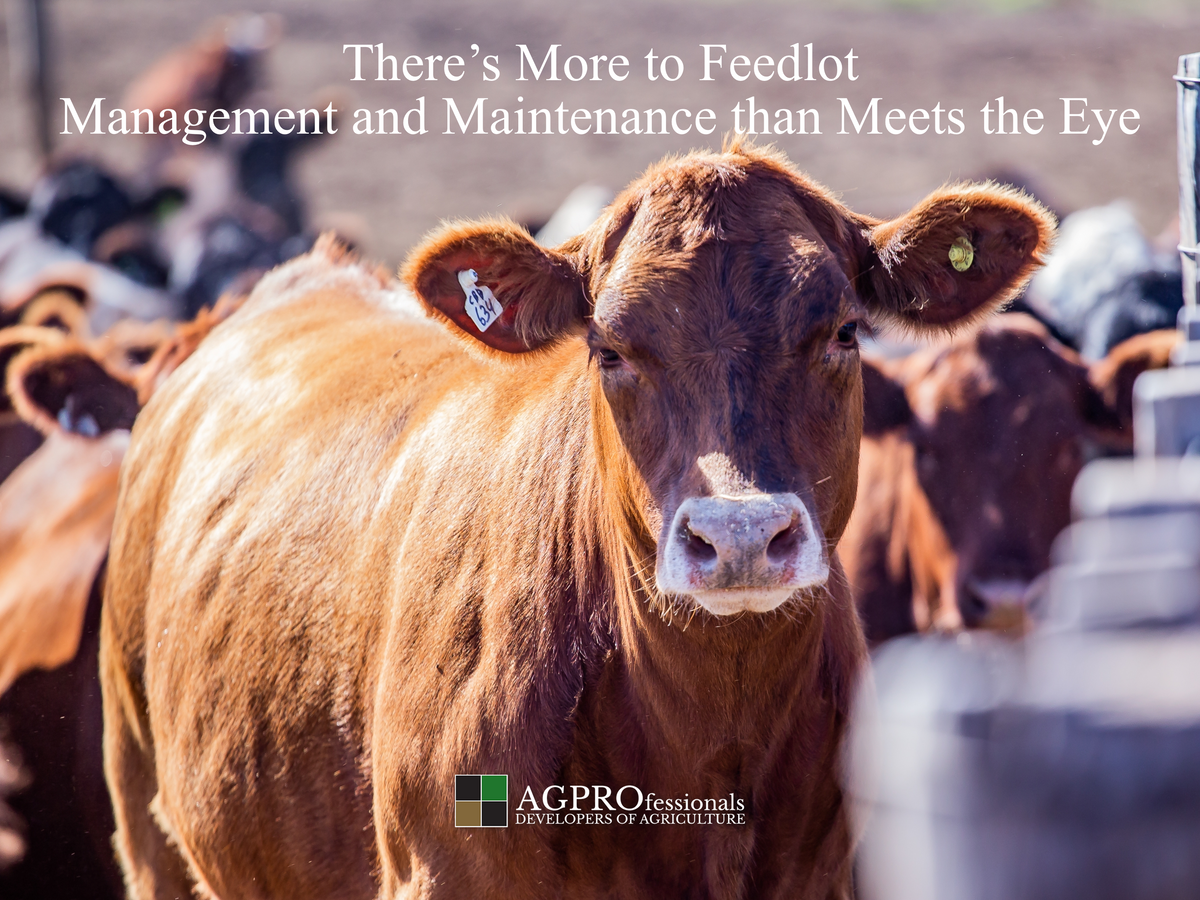There’s More to Feedlot Management and Maintenance than Meets the Eye
We believe it is vital for families buying groceries to understand where their food comes from and the work and consideration that goes into its production. In the beef industry cattle spend most of their lives out on pasture. When cattle are close to being ready to process into food and other valuable resources, most spend the last several months at a feedlot or finishing yard in preparation. Another name for a finishing yard is a confined animal feeding operation or CAFO.
Animal Welfare and Environmental Protection
When managing feedlots or finishing yards, it is crucial for producers to prioritize the well-being of the animals they are responsible for. Along with ensuring that the livestock have access to proper nutrition and water, it is also important to manage the environment effectively. Good environmental management practices promote the health and well-being of the animals, help to reduce nuisances, and are the foundation of good land stewardship.
Engineering Plays an Important Role in Feedlot and Finishing Yard Design
Most people might be surprised to learn that feedlots and finishing yards are highly regulated with a host of requirements that must be met. This is where agricultural, civil, and environmental engineers become a valuable resource to beef producers. Engineers are involved in the layout, design, permitting, and building of feedlots and finishing yards. They work to ensure that the facilities they design benefit the health and well-being of the animals and comply with strict environmental regulations, which include protection of surface and groundwater.
Manure Management and Removal
Cattle have very efficient digestive systems. They can turn plant matter that humans are unable to digest into nutritious beef and dairy products, as well as other valuable resources we use every day. Because of this, manure is a major byproduct of beef and dairy production. This means that management teams at feedlots and finishing yards are always focusing on manure management practices.
Basic manure management practices consist of routine lot harrowing, lot scraping, and cleaning of alleys. In between pen cleanings, manure is mounded and dried in the pens prior to being exported. Exporting manure and using it in other applications helps eliminate some odors associated with the manure composting process. Manure applications are required to be managed under a Nutrient Management Plan (NMP) that is regulated and inspected routinely by state agencies.
Application of Manure as Fertilizer
In most cases, where feedlot and finishing yard operators also grow crops, the manure is used for fertilizer. In other cases, the manure is removed and trucked to another farm or ranch that is growing crops. When a farmer or rancher is growing crops or working on improving pastures for grazing animals, they will often apply soil amendments. Soil amendment options can vary, ranging from certain fertilizers, minerals, livestock manure, and more. It is important to know that no matter what amendment is applied, the application itself and the cost of the material are significant expenses. Therefore, care is taken to ensure the right materials are used and applied at the right time.
Drainage
Feedlots and finishing yards are required to monitor drainage and stormwater runoff. There are a variety of ways in which this is managed, including the creation of aerobic designed ponds. These shallow runoff ponds are designed to capture stormwater runoff, promote evaporation, prevent seepage, and help break down the manure through aerobic process.
Reducing Fly Habitats and Introducing Predators
Feedlots and finishing yards implement a variety of methods to control flies. Standing water, weeds, and grass are all prime habitats for fly reproduction and protection. Manure around water tanks and under fences are also habitats for pests. This is why feedlots and finishing yards mow grass and weeds in fields and surrounding areas. Other methods to control fly breeding habitat consist of ditch burning, mowing along roadways and waterways, and grading lots, pastures, and roadways to reduce standing water. In some circumstances, flies are biologically controlled using non-stinging parasitic wasps.
Rodent Control
Rodents inhabit environments where they have easy access to a food supply and a prime habitat for breeding and living. The attraction of rodents to feedlots and finishing yards is minimized by securing commodity (food for cattle) storage and regularly cleaning and maintaining the storage areas, feed bunks, and areas around feed bunks. Site maintenance and grading are also effective deterrents for rodents. The use of traps and other deterrents are also employed when needed.
Additional Control of Pests
If additional pest prevention is necessary and nuisance conditions from pests and rodents persist, feedlot teams will often first try increasing the schedule of regular maintenance. If those methods are insufficient, they turn to chemical control and treatment options approved by the USDA.
It’s a Science and an Art
This short article has just touched on some of the many factors feedyard teams take into consideration every day, from facility design that impacts workflow and animal comfort to feed storage and delivery, water systems, dust and mud control, and more.
Feedlot and finishing yard practices have been developed over the years as both an art and a science. The art of good management comes from paying attention to the performance and well-being of their animals and comes from years of experience handed down from generation to generation. The science comes from working with livestock specialists like veterinarians and scientific researchers to agricultural and civil engineers.
Click HERE to learn more about our engineering services

